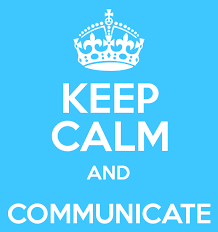
Recently I facilitated a week long senior leadership workshop for a well known global company. Every day an executive spoke to the thirty aspiring leaders. The format for the visiting executives was for them to speak for thirty minutes then to hold a Q&A for 30 minutes. These were seasoned executives who had achieved significant success. There were four men and one woman all with very different speaking styles. Having delivered a number of speeches myself, I still find it fascinating to watch and to learn from seasoned executives. To watch how they deliver presentations, connect with their audience and communicate their message is great learning. With this senior group of executives, it was really clear why they were in their positions.
Here are the seven common things I noticed that each executive did exceptionally well to communicate with the group.
- Took Command of the Room
They walked in to the room and immediately knew what to do. Each of the executive speakers had been assigned a “go to” person in our training room. As soon as the executive arrived, he/she looked for and engaged with that “go to” person quickly, reviewed the agenda and covered logistics… all in less than 60 seconds. Then they returned to the people in the room, and made contact with each person. Each executive had a different style for how they worked the room, some executives shook an aspiring leader’s hand, others waved at the participants, and other executives spoke with those participants who had the courage to come up to the executive. Their presence was purposeful, as they knew exactly what they wanted to do when they walked into that room.
Whether you have a “go to” person or not, it’s really important to know exactly what you will do when you walk into a room. This may require a visit in advance to scope out your surroundings or a call/email to someone familiar with the room. It’s very important to convey confidence when you walk into a room, know where you will stand/sit, with whom you will start a conversation and what you will say. Remember the expression “You’ll never get a second chance to make a great first impression.” Every encounter, from conferences to meetings to business lunches, presents an opportunity to meet people, network, and expand your professional contacts by making a positive first impression. You’ve got just seven seconds according to research – but if you handle it well, seven seconds are all you need!
2. Exceptional Speaking Skills
While each executive had a very different personality style, some were forceful and direct, others gregarious, and another more guarded, each was very comfortable with their communication style – both verbally and non verbally. Great speaking skills are identified as the most important communication requirement for leadership and executive presence. Even with their different personalities, each person spoke with confidence, stood tall, had passion about their topic and most of all, they engaged the audience. They filled their talk with personal stories. They had a conversational style of speaking that made them believable and easy to relate to. They spoke with intention and conviction. Their focus on the topic and logical explanations helped keep the stories meaningful and moving.
Communication, another marker of executive presence, involves the ability to speak directly, and to convey not only the substance of your ideas, but a sense that you should be listened to. Clarity and assertiveness in speech and commanding a room are important elements of strong communication. Body language, another critical element, works differently for men and women, according to a Center for Talent Innovation report. Women need to be especially vigilant about body positioning: sitting in the front of the room when their position demands, not placing a hand in front of their face when seated at a table, and standing with legs straight and shoulders back.
Those with executive and leadership presence are able to speak well with the press, in front of large groups and one-on-one. Commanding a room means getting people to listen when you speak–through great speaking skills, confidence and standing with confidence.
3. Used humor, Compassion, and empathy
Even with their different personalities, each showed a sense of humor, compassion and empathy while telling their stories and answering questions. This really engaged the group. Throughout their talks I saw laughter in the audience, complete silence at times, smiles and other emotional expressions. They didn’t tell jokes, as this could potentially fall flat. Instead they told stories about themselves, their families, their current business challenges with both humor and candor. When they used humor, it was never self-deprecating. Their humor showed a lighter side that made them all the more approachable.Never underestimate the power of emotions.
If someone can make you smile or shed a tear, you know there’s a pretty strong emotional bond there. These emotions are great to tap into because as humans, we love to relate.When speaking, whether it’s to one or a thousand, be comfortable to show a lighter side of yourself. It will require you to have the ability to read the audience and to have a clear understanding of how to weave your personal story with the latest news and global business climate. When your audience walks away, you will have made a purposeful and emotional lasting connection.
4. Good Posture and Body Language
They all stood tall, made good eye contact with everyone in the room, smiled and had an open posture during the time in front of the room. When I looked at them, I saw strength, passion, optimism (even when this company was in a downward spiral) confidence and focus. Nonverbal communication says a lot. Body language portraying strength and confidence signals you’re leadership material. Pay attention to the body language you communicate. If you have a straight or angry face, it communicates a totally different message than a happy smiling face. Your authentic smiling face is much more inviting and will portray confidence and optimism. Stand tall, hold your head upright and make eye contact.
5. Appearance and Message
Their appearance was impeccable. The men were wearing well tailored suits, coordinated ties and shirts and polished shoes. The female executive was polished, hair and makeup natural, simple accessories and tailored suit. Their dress and grooming projected their level of self-confidence. It wasn’t distracting nor was it overstated.Appearance “opens the door and gets you invited in,” the Center for Talent Innovation research found. Good grooming — looking polished and put together — mattered most to survey’s respondents. The survey found that 83% of senior executives believe that “unkempt attire” detracts from a woman’s executive presence, while 75% of senior execs believe it detracts from a man’s.
Like it or not, the first thing people judge you (and your company) by is how you, the leader, looks. As the head of the company, your clothing, hair, and makeup say something about your company. Make sure your personal style conveys the image that you want to portray.
If you’re a funky/creative company, dressing creatively may work. If you are with a more conservative company, conservative appearance will be extremely important. Be intentional about the impression you want to make and be consistent with yours and the the company’s brand.
6. Message Delivered Positively
These executives were positively infectious. I was blown away by their positive attitudes and found myself wanting to listen to them for more than the time allotted. In Daniel Goleman’s book, The New Leaders, he starts with this statement: “Great leaders move us. They ignite our passion and inspire the best in us. When we try to explain why they are so effective, we speak of strategy, vision, or powerful ideas. But the reality is much more primal. Great leadership works through the emotions.” That is how I felt after listening to each, I wanted to finish the conversation at dinner and learn more about their perspectives on business and career advancement.
7. Each left a Distinct Lasting Impression
Each finished their time with the group with a summary, conclusion or “last words”. In addition to the connection they made with the group with their authentic stories, their presence and their message, they wanted to leave us with words that mattered. They summarized the main points and some ended with an anecdote or quotation that captured the theme. I have lasting impressions for each speaker. With every speech, when your audience walks always, you want to make sure they leave with a lasting impression, know why they were listening and have a clear idea of your message. If you do this, you will be remembered.
Communication both written and verbal is used in 90% of all business transactions. Whether you’re meeting with a peer or closing the biggest deal of your career, the art of communicating clearly and effectively is one area of executive and leadership presence that is key to your career advancement. Pay attention to connecting your words with your message and you will learn to communicate effectively with those you lead.
Learn more about improving your communication skills as a member of the Executive Presence group.
See you next week, with our 3rd characteristic for Executive and Leadership Presence – Competence – To be an expert in your field and continue to learn
